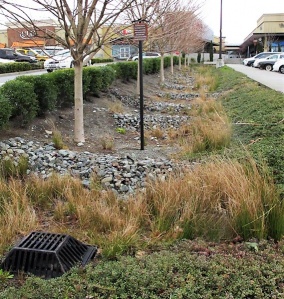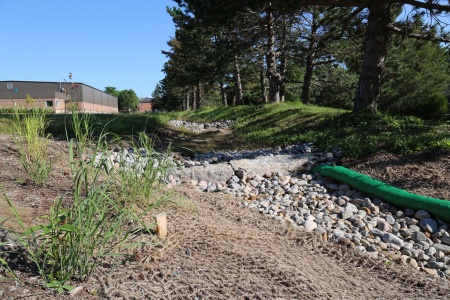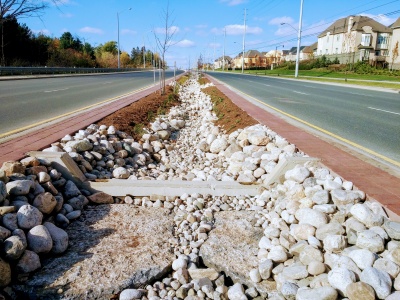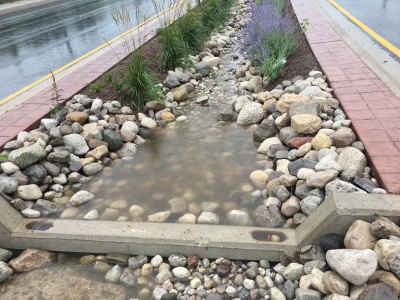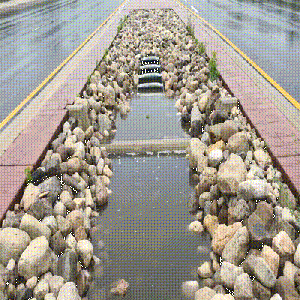Difference between revisions of "Check dams"
Jump to navigation
Jump to search
Jenny Hill (talk | contribs) m (→Gallery) |
Jenny Hill (talk | contribs) m |
||
| Line 2: | Line 2: | ||
{{Textbox|1=Check dams: | {{Textbox|1=Check dams: | ||
| − | *may be constructed of any resilient and waterproof material, including: rock gabions, earth berms, coarse aggregate or rip-rap, concrete, metal or pre-treated timber. Rocks used in check dams should have median diameter 25-75 mm. | + | *may be constructed of any resilient and waterproof material, including: rock gabions, earth berms, coarse aggregate or rip-rap, concrete, metal or pre-treated timber. Rocks used in check dams should have median diameter 25 - 75 mm. |
*for enhanced swales may be up to 0.6 m in height; the maximum design depth of ponded water should be ≤ 0.6 m. | *for enhanced swales may be up to 0.6 m in height; the maximum design depth of ponded water should be ≤ 0.6 m. | ||
*designed for higher flow velocities should have spillways incorporated into their profile, to direct water to the centre of the swale. | *designed for higher flow velocities should have spillways incorporated into their profile, to direct water to the centre of the swale. | ||
Revision as of 13:31, 28 March 2018
Check dams are small dams or weirs constructed across a drainage ditch, swale, or channel to lower the speed of concentrated flows for a certain design range of storm events and to promote infiltration.
Check dams:
- may be constructed of any resilient and waterproof material, including: rock gabions, earth berms, coarse aggregate or rip-rap, concrete, metal or pre-treated timber. Rocks used in check dams should have median diameter 25 - 75 mm.
- for enhanced swales may be up to 0.6 m in height; the maximum design depth of ponded water should be ≤ 0.6 m.
- designed for higher flow velocities should have spillways incorporated into their profile, to direct water to the centre of the swale.
- are usually installed between 10-20 m along the swale. The spacing of dams should not exceed the horizontal distance from the toe of the upstream dam to the same elevation on the downstream dam.
- should have energy dissipation and erosion control measures installed in the 1 - 2 m downstream. Examples include large aggregate or turf reinforcement
Sizing and spacing of check dams[edit]
Gallery[edit]
Enhanced swale with rocky check dams and a metal overflow grate in Northgate Mall parking lot, Seattle. Photo credit: MLSmith
Bioswale with rock check dams to slow down the water, encouraging infiltration. Note the biodegradable erosion control blanket still in place. LSRCA headquarters, 2017
A swale during a rain event, with concrete check dams, armourstone, mulch and Tall grasses to slow down moving water (as shown in the .gif file) to promote infiltration in the feature.
Also see Jen's Pinterest board of check dams
